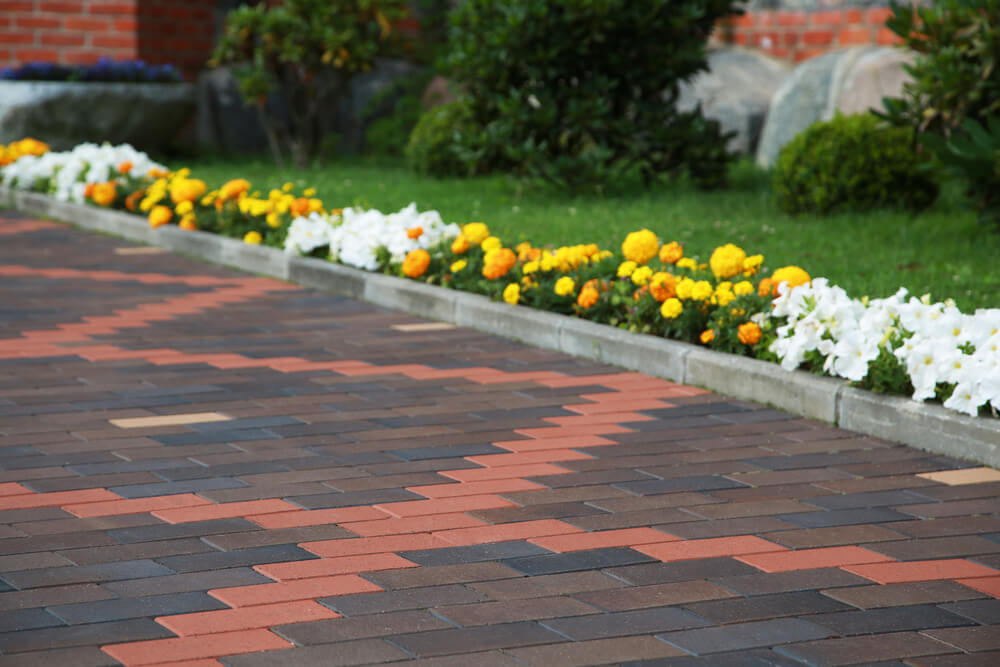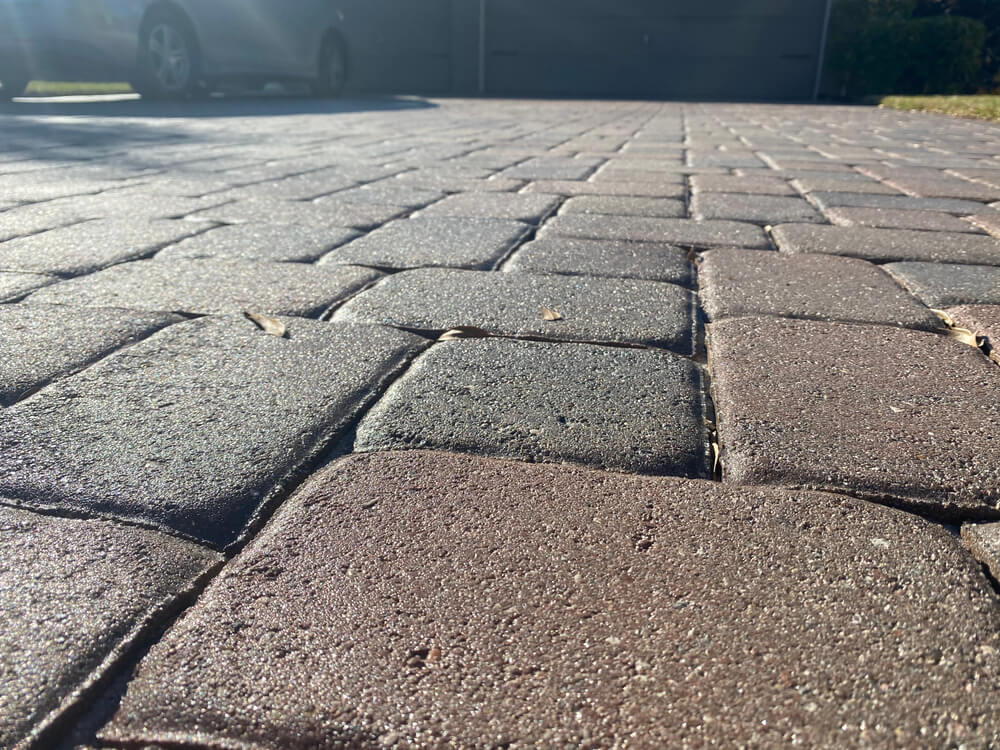Paver sealing is more complex than it may sound. Actually, there are better approaches than one-size-fits-all for the job. Different materials require different solutions to the issue.
Learning how to deal with your backyard needs is the first step in paver maintenance. Whether you have concrete, travertine, or natural stone pavers, you should know how to take care of your driveway.
And we’re here to give you the instructions. We’ll explain the paver sealing process for all popular materials and give you the necessary info to do the job correctly.
And, for the best pavers from Broward Country, South Florida contact
Cricket Pavers. Our expert team will ensure your home exterior looks better than ever.
Types of Paver Sealers or Paver Sealants
Essentially, there are two types of paver sealers on the market.
- Solvent-based sealers
- Water-based sealers
Water-based sealants are further divided into film-forming and penetrating paver sealers. If you’re looking for a bit extra with your paver sealers, film-forming sealers are an option to consider.
Not only will they help you seal the spaces between the pavers, but they will also improve the visual appearance of the driveway. This type of sealer enhances the color of the pavers, offers a high gloss finish, and provides stain resistance.
Penetrating sealers, on the other hand, usually don’t change the look of the pavers. But, they have their advantages. People who want the job finished quickly should ask for penetrating sealers since the application process requires minimal time.
Joint sand stabilization is the main difference between these two types of sealers. Penetrating sealers don’t bind the joint sand, while film-forming do.

Solvent-Based Sealers
Solvent-based sealers have a few pros, but unfortunately, most of their characteristics could be more beneficial. Firstly, they aren’t good for the environment. That’s why more and more manufacturers are moving away from this type of sealer.
Then, they are more difficult to spray than the competition. Water-based sealers are applied more easily, and they actually seal the joints.
That leads us to the most significant disadvantage of solvent-based sealers.
This type of sealer only works on the top surface of paver sand. Solvent-based sealers don’t soak deeper like the ones based on water. That’s why working with them won’t produce long-lasting results.
And, on top of all that, this type of product can be slippery. The material can bring out the color of the paver, but applying too much can turn your driveway into a slippery road.
Water-Based Sealers
There are a few reasons to consider water-based sealers as your go-to. The most significant benefits this sealer carries are:
- Provides excellent penetration into concrete pavers
- It can create both a high gloss or natural look on the surface
Firstly, this type of sealant creates a barrier on top of the paver surface. This stops the water from being in contact with the material and eliminates the possibility of freeze-thaw damage. It also prevents the staining of the pavers and UV degradation.
If your pavers are damaged and look outdated, using penetrating sealers can help restore some of their beauty.
It is also worth mentioning that water-based sealers are non-toxic and good for the environment, unlike the other option.
Concrete Pavers
Concrete pavers are the most popular type of paver driveway in Florida. To get the final product, manufacturers mix concrete and color pigments. So, all kinds of designs and color schemes are available if you decide on this option.
As you know, pavers go through quite the wear-and-tear after installation. They are exposed to sun rays which deteriorate the color pigments. This results in the loss of color you see with time.
Also, pavers have to deal with acid and impact from the rain, salt in the air and pools, everyday traffic, spills, and cracks.
These factors can break down the surface material and expose the rocks in the concrete. The rocks in the concrete mix don’t take in the color pigments, so their appearance won’t benefit the look of your driveway.

Chicago Brick
The difference in color options is the first important thing to note with Chicago brick. These pavers don’t use color pigments to get the wanted color. Instead, the clay’s color determines the material’s final look. Also, the cooking of the clay plays a factor. The color will change based on how long and at what temperature the clay was cooked.
However, brick won’t lose its color. The entire brick is made from the same shade of clay, so no amount of wear and tear will take that away. Still, other conditions have a role in the material’s look in the long run.
Salt can still deteriorate the colors, so protecting the material is crucial to have long-lasting results. Bricks store plenty of water in their pores, which can lead to the growth of black mold. How to avoid that? With water-repellant sealers! They won’t allow the water to reach the critical areas, so your Chicago Brick can stay good-looking for a while.
Keeping the joints filled with paver sand is another tip worth mentioning when dealing with Chicago Brick. This type of paving has unusual gaps due to the differences between single bricks. If these joints aren’t filled with paver sand, your pavers will move around and shift uncontrollably.
Avoid that by hiring professionals to do the installations and ensure you’re left with a high-quality driveway.
Travertine, Limestone, and Natural Stone Pavers
If you’re looking for something natural, then limestone and travertine pavers may be worth considering. Of course, there are other reasons to choose these materials.
No pigments are used to give these pavers color, so you don’t have to worry about redoing the exterior after a few years. In fact, if maintained correctly, travertine pavers can outlast the home. However, if you leave them unprotected, they’ll last as long as the artificial materials.
On top of sealing the natural materials, you’ll have to keep the paver sand locked in the joints between the pieces. There are multiple reasons to do this:
- Minimize chipping
Don’t allow two pieces to be right next to each other. With sand between the hard materials, chipping will be minimized.
- Avoid unevenness
With sand between them, natural stone pavers won’t be able to move individually. Instead, they’ll behave as one, and you’ll avoid unevenness in your driveway.
- Stop rain damage
The sand between the paver pieces will stop the rain from washing out the sand places beneath the pavers. Without the top layer of sand, the rain may wash out the rest and create unevenness on the surface.
- Prevent mold
If you leave the space between the travertine pavers empty, it may get filled with natural materials blown in by wind or water. After a while, these materials can turn into mold and damage your driveway.
Contact Cricket Pavers
If you’re looking for high-quality paver installation in Florida, contact Cricket Pavers and let our experts do the job for you.




